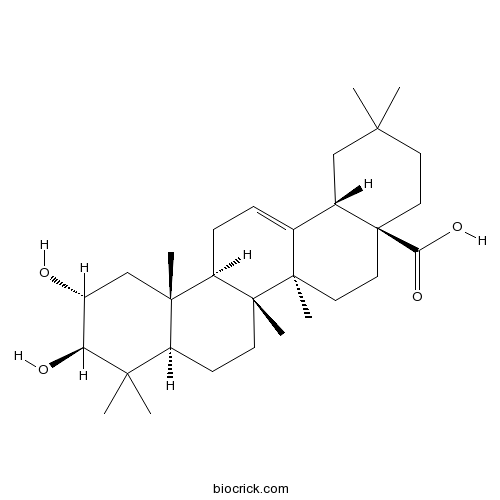Barringtonia racemosa
Barringtonia racemosa
1. The products in our compound library are selected from thousands of unique natural products; 2. It has the characteristics of diverse structure, diverse sources and wide coverage of activities; 3. Provide information on the activity of products from major journals, patents and research reports around the world, providing theoretical direction and research basis for further research and screening; 4. Free combination according to the type, source, target and disease of natural product; 5. The compound powder is placed in a covered tube and then discharged into a 10 x 10 cryostat; 6. Transport in ice pack or dry ice pack. Please store it at -20 °C as soon as possible after receiving the product, and use it as soon as possible after opening.
Natural products/compounds from Barringtonia racemosa
- Cat.No. Product Name CAS Number COA
-
BCN5487
Crategolic acid4373-41-5
Instructions

Antioxidant-rich leaf extract of Barringtonia racemosa significantly alters the in vitro expression of genes encoding enzymes that are involved in methylglyoxal degradation III.[Pubmed: 27635343]
Barringtonia racemosa is a medicinal plant belonging to the Lecythidaceae family. The water extract of B. racemosa leaf (BLE) has been shown to be rich in polyphenols. Despite the diverse medicinal properties of B. racemosa, information on its major biological effects and the underlying molecular mechanisms are still lacking.
Ophiostomatoid fungi associated with mangroves in South Africa, including Ophiostoma palustre sp. nov.[Pubmed: 27562287]
Mangrove trees are continuously under stress due to environmental and/or anthropogenic pressures, which expose them to attack by pathogens, compromising their survival. Ophiostomatoid fungi cause sap stain and diseases of a wide spectrum of tree species globally. These fungi infect trees through natural, insect, animal and/or human made wounds. During routine surveys of mangrove trees in South Africa, wounds on branches and stems of Avicennia marina were regularly monitored for the presence of ophiostomatoid fungi at ten study sites in the country. The stems of four mangrove species, A. marina, Bruguiera gymnorrhiza, Rhizophora mucronata and Barringtonia racemosa were also wounded and evaluated for the appearance of these fungi. Ophiostomatoid fungi were obtained from the mangrove associate B. racemosa, but not from any of the true mangroves. Analyses of DNA sequence data for the internal transcribed spacer, β-tubulin, calmodulin and translation elongation factor gene regions revealed that the fungi isolated from the wounds on B. racemosa belong to three species in the Ophiostomataceae, including a new taxon described here as Ophiostoma palustre sp. nov. These results suggest that the mangrove associate B. racemosa is more prone to colonization by ophiostomatoid fungi than the true mangroves.
[Chemical constituents from Barringtonia racemosa].[Pubmed: 28905569]
To investigate the chemical constituents from Barringtonia racemosa, twelve compounds were isolated by chromatography methods and identified as 3β-p-E-coumaroymaslinic acid (1), cis-careaborin (2), careaborin (3), maslinic acid (4), 2α, 3β, 19α-trihydroxyolean-12-ene-24, 28-dioic acid (5), 3β-p-Z-coumaroylcorosolic acid (6), corosolic acid (7), 1α, 2α, 3β, 19α-tetrahydroxyurs-12-en-28-oic acid (8), 19α-hydroxyl ursolic acid (9), 3α, 19α-dihydroxyurs-12-en-24, 28-dioic acid (10), tormentic acid (11), 3-hydroxy-7, 22-dien-ergosterol(12) by the NMR and MS data analysis. Among them, compounds 1-4,7-12 were obtained from the genus Barringtonia for the first time. All the compounds didn't show nocytotoxic activity against MCF-7 and A549 cell lines (IC₅₀>50 mg•L⁻¹).
Antioxidant and Cytotoxic Effect of Barringtonia racemosa and Hibiscus sabdariffa Fruit Extracts in MCF-7 Human Breast Cancer Cell Line.[Pubmed: 26941539]
The fruits of Barringtonia racemosa and Hibiscus sabdariffa have been used in the treatment of abscess, ulcer, cough, asthma, and diarrhea as traditional remedy.


